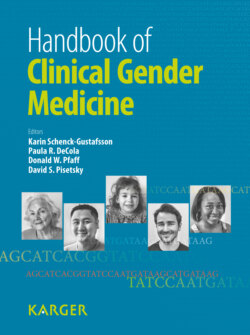Читать книгу Handbook of Clinical Gender Medicine - Группа авторов - Страница 69
Hormonal Failures
ОглавлениеHormonal failure can be due to insufficient production (gonadal dysgenesis), failed central regulation, or an abnormal response of the target tissue. Evaluation of hormonal secretion varies with the age of the child; on the first day of life, the male newborn plasma androgens are still high due to placental stimulation but will soon fall before the so-called ‘mini puberty’ (days 15-90) where a flare of sexual hormones occurs secondary to gonadotropin stimulation. Beyond the 3rd month of life, androgens are low and will remain so until puberty; AMH and inhibin B (both secreted by the Sertoli cells) are high and represent reliable indicators of Sertoli cells. Leydig cells can be challenged by injections of human chorionic gonadotropin (HCG) or its synthetic recombinant analogs [12]. Plasma AMH above 600 pmol/l is considered a normal value. There is a consensual protocol for HCG stimulation. Failed hormonal gonadal secretions are commonly labeled as ‘gonadal dysgenesis’, although there is no clear histological definition of this entity [13]. Tissue response to androgens can be assessed by clinical changes after hormonal stimulation and by sequencing the genes of the androgen receptors. Beyond these receptors, tissue proteins play an important role in GT construction and can be unbalanced as shown on the ventral aspect of the hypospadiac penis.
